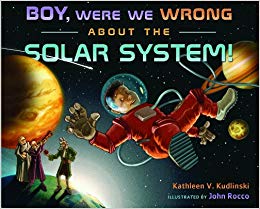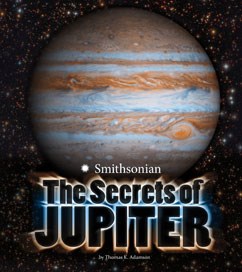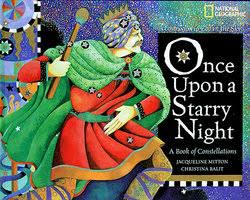Astronomy Unit Study Resources (with 3 FREE Printables)
- Sarah
- Aug 22
- 9 min read
My kids and I have completed several unit studies on Astronomy (4 years apart). My kids and I have a lot of fun with this unit, focusing on:
astronomical observations and field trips
biographies of famous astronomers
hands-on projects
general astronomy books
astronomy-related movies, music, and documentaries
This combination of resources seems to work particularly well, and really sparks my children's enthusiasm. In this post, I will detail all of the resources and books we have used, to make it easy for you to have your own astronomy unit study, too!

Astronomical Observations and Field Trips
One of the best things about studying astronomy with kids is that some of the field trips can happen in your own back yard. With a little bit of online research, you can find out which astronomical events will be happening over the course of your Astronomy Unit Study. Additionally, you may be able to attend local astronomy events hosted by your local astronomical society or university. Our field trips included:
stargazing to find the constellations and planets in our own back yard and while going out for walks after dark
getting up in the middle of the night to drive out to a very dark location where we could observe a meteor shower
observing a lunar eclipse
visiting nearby observatories
night sky telescope observations through the local university and astronomical society - this was especially worthwhile because we were able to learn from people who were passionate and knowledgeable about astronomy
A few helpful resources for astronomy field trips are:
Earth Sky - This website shows objects of interests for every night.
Sky At A Glance - This website has week-by-week information for what to look for in the night sky.
Sky and Telescope - This website has detailed lists of upcoming meteor showers, eclipses, comets, and much more.
Star Walk app - This app makes it easy to find constellations, stars, and planets of interest, plus other objects of interest such as the International Space Station, satellites, etc.
Find the Constellations by H.A. Rey - This book is a perfect first reference for finding the constellations in the sky throughout the year. Beware that, because the planets move throughout the years, older editions of this book may be outdated.
The Stars by H.A. Rey - This book gives a more detailed look at the constellations and stars. Beware that, because the planets move throughout the years, older editions of this book may be outdated.

Biographies of Famous Astronomers
With read-aloud biographies, we were able to get up-close and personal with the people who have furthered humanity's understanding of the universe. Biographies are one of the best ways to incorporate history into our learning, as they make the events in history have more meaning when seen within the context of real people's lives.
I have included age codes to make it clear for which ages each book will be best suited. The age codes are: C = Children 4-9; Y = Youth 9-12; YA = Young Adults 13-15; A = Adults and the Later Teen Years (16-18)
(In chronological order)
AUDIOBOOK: Great Astronomers by Robert Ball (Y, YA, A) (FREE on Librivox. This book gives fascinating insights into the lives of great astronomers, many of whom we'd never even heard of! It does a good job of explaining the astronomical discoveries of each astronomer. The science in this book is challenging, even for me, but nonetheless my kids and I enjoyed listening to this audiobook, such as while driving in the car.)
Nicolaus Copernicus: The Earth Is a Planet by Dennis Brindell Fradin (C, Y)
Galileo's Journal 1609-1610 by Jeanne Pettenati (C, Y)
Along Came Galileo by Jeanne Bendick (C, Y, YA)
I, Galileo by Bonnie Christensen (Y, YA)
Starry Messenger by Peter Sis (Y, YA)
Newton's Rainbow by Kathryn Lasky (C, Y, YA)
Giants of Science: Isaac Newton by Kathleen Krull (Y, YA, A)
Caroline's Comets by Emily Arnold McCully (C, Y)
Look Up! Henrietta Leavitt, Pioneering Woman Astronomer by Robert Burleigh (C, Y)
Annie Jump Cannon, Astronomer by Carole Gerber (C, Y)
On a Beam of Light: A Story of Albert Einstein by Jennifer Berne (C, Y)
Odd Boy Out: Young Albert Einstein by Don Brown (C, Y)
Giants of Science: Albert Einstein by Kathleen Krull (Y, YA, A)
Clyde Tombaugh and the Search for Planet X by Margaret Wetterer (C, Y)
Counting on Katherine: How Katherine Johnson Saved Apollo 13 by Helaine Becker (C, Y)
Hidden Figures: The True Story of Four Black Women and the Space Race by Margot Lee Shetterly (C, Y)
Margaret and the Moon: How Margaret Hamilton Saved the First Lunar Landing by Dean Robbins (C, Y)
Hands-On Projects
We have used a few different simple hands-on projects during our astronomy units. These projects result in visual reminders that we could see daily, so these projects also really helped us become more deeply engaged in learning about astronomy and astronomers.
Paper Model of the Solar System
Creating a paper model of the solar system was a great way for us to understand the sizes of the objects in our solar system. Having this model hanging up in our house for several months resulted in my kids effortlessly learning the order of the planets in the solar system.
We made our solar system model to-scale, meaning that the planets and sun were shown accurately regarding how their sizes compare to each other. The sun really is shockingly large! We hung up each paper planet at the correct distance from the sun so we could see how far apart things are in the solar system; however, we had to use a different scale for the distances from the sun than for the sizes of the planets, or else they would not be able to fit in our home. If we used the same scale for the distance that we used for the size of the planets, Neptune would have needed to be 6,466 feet (over one mile) away from our sun!
To make it easy for you to create your own paper solar system, click on the image below to get a FREE printable showing the sizes of the planets and distances from the sun.
Wall of Famous Astronomers
The other simple project we did during our Astronomy unit was the Wall of Famous Astronomers. When we learned about different astronomers, my kids enjoyed cutting and coloring pictures of each astronomer to add to our wall. Having these short biographies and pictures on our wall was very engaging for my kids, as they periodically referred back to the pictures and made up play scenarios involving the different astronomers. The Wall of Famous Astronomers was a helpful visual reminder for us all in learning about each of these important persons.
If you want to make your own Wall of Famous Astronomers, click on the image below to download your FREE printable of pictures and biographies.

The Earth as a Peppercorn
Another simple project is The Earth as a Peppercorn, which gives guidance for creating a to-scale model of the solar system with the Earth being represented by a peppercorn. You will need about 1/4 mile of distance to walk for this activity, and it is very impressive to realize just how large the solar system is when you walk out to the gas giants and Pluto!
You can download a FREE printable of The Earth as a Peppercorn here: https://lavinia.as.arizona.edu/~dmccarthy/GSUSA/activities/Additional%20Files/Thousand%20Yard%20SS%20Earth%20is%20Peppercorn.pdf
General Astronomy Books
Besides astronomer biographies, my kids and I also read many books about astronomy and space in general. I also made sure to read a few engaging astronomy books on my own, to further my own education and give me plenty of enthusiasm to share with my kids.
The age codes are: C = Children 4-9; Y = Youth 9-12; YA = Young Adults 13-15; A = Adults and the Later Teen Years (16-18)
Books about the Solar System
Boy, Were We Wrong About the Solar System by Kathleen Kudlinski (C, Y)
The Sun is My Favorite Star by Frank Asch (C)
The Sun: Our Nearest Star by Franklyn Branley (C, Y)
The Sun and the Moon by Carolyn DeCristofano(C, Y)
The Sun by Isaac Asimov (C, Y)
The Magic School Bus Lost in the Solar System by Joanna Cole and Bruce Degen (C, Y)
The Planets in Our Solar System by Franklyn Branley (C, Y)
Smithsonian Planets series: The Secrets of Mercury, The Secrets of Venus, The Secrets of Saturn, etc. (Y, YA)
True Book Planet series: Planet Mercury, Planet Venus, Planet Jupiter, etc. (C, Y)
Earth! My First 4.54 Billion Years by Stacy McAnulty (C, Y)
The Moon Seems to Change by Franklyn Branley (C, Y)
The Moon Book by Gail Gibbons (C, Y)
Let's Go to the Moon by Janis Wheat (C, Y)
The Moon by Seymour Simon (C, Y)
The Magic School Bus Inside the Earth by Joanna Cole and Bruce Degen (C, Y)
When is a Planet Not a Planet? by Elaine Scott (Y, YA)
The Planets by Dava Sobel (YA, A) [For older kids, this book can serve as a nice "spine" read-aloud book (alongside the Great Astronomers audio book). There are opportunities to make this even more in-depth by looking up the many space vehicles, music, art, and exploration missions mentioned in each chapter. Using this book in this way, we needed about 1.5-2 hours per chapter in order to give us time to explore the many neat things mentioned in the book.)
How I Killed Pluto and Why It Had It Coming by Mike Brown (YA, A)
Books about Stars, Galaxies, and Other Astronomical Features
The Stars: The Definitive Visual Guide to the Cosmos by DK (C, Y, YA, A)
Basher Science: Astronomy by Simon Basher (C, Y, YA)
Older Than the Stars by Karen Fox (C, Y)
Galaxies by Seymour Simon (Y, YA)
The Sky is Full of Stars by Franklyn Branley (C, Y)
The Big Dipper by Franklyn Branley (C)
Zoo in the Sky by Jacqueline Mitton (C, Y)
Once Upon a Starry Night by Jacqueline Mitton (C, Y)
Oh No, Astro! by Matt Roeser (C, Y)
A Black Hole is Not a Hole by Carolyn DeCristofano (Y, YA)
Space Exploration Books
Exploring Space: From Galileo to the Mars Rover and Beyond by Martin Jenkins
To Space and Back by Sally Ride (C, Y, YA, PE)
The International Space Station by Franklyn Branley (C, Y)
Cars on Mars: Roving the Red Planet by Alexandra Siy (YA)
You Are the First Kid on Mars by Patrick O'Brien (C, Y)
Welcome to Mars: Making a Home on the Red Planet by Buzz Aldrin (Y, YA)
Astronomy-Related Movies, Music, and Documentaries
Gustav Holst's The Planets suite was an easy way for us to incorporate classical music into our unit study. The music is beautiful and moving, and gave us an opportunity to discuss the personalities that have been assigned to the planets through Greco-Roman mythology.
We also watched a few astronomy-related movies/documentaries. All of the movies have some intense scenes that may not be appropriate for young children, so use discretion in determining what will be appropriate for your own kids.
In the Shadow of the Moon documentary (all ages)
Apollo 13 movie
The Martian movie
Contact movie
Putting It All Together
This astronomy unit study can easily take a semester or longer to complete. The most important thing is to keep it light and fun, rather than turning it into an "assignment" for the kids. Allow your children to participate as much or as little as they choose, and focus on building your own enthusiasm which you can share with your kids.
Relax and take as long as you need to complete the unit study. If one particular topic/astronomer/space mission captures your child's interest, pause there and linger for awhile, digging as deep as your child's interests reach. Be open to finding other ways to include your children's own unique interests into the unit study, such as through art projects, lego creations, or music.
Here is an example of one way you can use all of these astronomy resources to have your own unit study:
Plan the field trips: Find out when there will be celestial events and local astronomy events to participate in. Mark them on the calendar so you don't forget!
Locate the books: Hopefully, many of the books will be available at your local library or used bookstore. Order any books that will be needed for the upcoming unit.
Enjoy star-gazing together: Spend a few weeks getting acquainted with the night sky and constellations.
Introduce the sun and planets: Once every week or two, focus on a new heavenly body from our solar system. Read aloud books about the sun/planet, and try to find each planet in the night sky. Make a paper model of the sun/planets as you go, and listen to The Planets suite together.
Get to know the astronomers: Once every week or two, listen to a chapter from Great Astronomers and/or read aloud a biography of an astronomer. Add a picture of each astronomer to your wall.
Learn and explore more: As time allows, incorporate some of the general astronomy and space exploration books.
Watch the videos: Incorporate the videos when their topics arise, such as watching Apollo 13 during the week when you are learning about the moon.
Have fun learning about astronomy together!
Links to Amazon are affiliate links. If you use these links, your price remains the same but I may earn a small commission. Thanks for supporting this site!
























































